De-Graft visits a coastal region in Scotland to explore a marine reserve and its rich biodiverse habitat.
De-Graft: Today IÔÇÖm exploring ocean life and getting a close up look amongst the rock pools. LetÔÇÖs zoom inÔÇŽ
I found a crab! IÔÇÖm in a place called Coldingham Bay which is part of the first voluntary marine reserve in Scotland, meaning itÔÇÖs area is protected by local volunteers.
Later IÔÇÖm going to be joining locals Sonny and Grace, who are helping look after the beach by doing some litter picking.
But first, letÔÇÖs zoom outÔÇŽ Coldingham Bay is on the east coast of Scotland. If we zoom out a little more we can see all this blue ÔÇô thatÔÇÖs one big interconnected world ocean, covering around seven tenths of the planetÔÇÖs surface. But itÔÇśs often divided into five regions when we talk about it: the Pacific, Atlantic, Arctic, Indian and Southern oceans.
Ocean life is part of the aquatic biome, or habitat, which means anything that relates to or lives in the sea. There are many different types of vegetation in ocean environments. Along these shores thereÔÇÖs a lot of kelp, which is a type of seaweed. Underwater kelp forests are great for the planet because they store carbon, even more effectively than tropical rainforests.
Unfortunately, ocean habitats are often overlooked and have been badly impacted in the past by things such as marine transport, like fishing boats and ships. Dredging, when machines dig up the sea bed, often to deepen channels for ships and boats. And pollution or sewage waste. However, in recent years new projects have been created to help protect ocean life. Such as replanting seagrass beds, that are amazing ecosystems.
Locals Sonny and Grace already know a bit about looking after the ocean. IÔÇÖm joining them litter picking on the beach, which helps to keep the water as clean as possible.
Child: Ahah, a bit of plastic!
Child: And I found some newspaper.
De-Graft: You know what guys, I think this looks beautiful, but whatÔÇÖs it like actually living near the sea?
Child: In the summer, with my friends coming and we all get boogie boards.
De-Graft: I think this view looks pretty incredible.
Child: Any time of the year, it just looks magical no matter what.
De-Graft: So IÔÇÖve brought a couple pictures of some ocean life for you guys and I want to see if you recognise any of these. IÔÇÖve been told that this fish lives around here. Do you recognise it?
Child: I have never seen that before!
De-Graft: So this is called an arctic wolffish. Divers from all around the UK come over here to find it.
Child: Seal.
De-Graft: A nice little seal, yeah! We know that seal colonies come here to breed in the winter.
Child: A seagull.
De-Graft: Oh, close! This is actually called a Tern. Now Artic Terns have one of the longest migrations of any bird. They come here in the summer and fly all the way to the Antarctic in the winter. Do you two think that itÔÇÖs important to look after ocean life?
Child: ItÔÇÖs absolutely important because imagine if we had no wildlife, how boring would the world be.
De-Graft: Yeah, thatÔÇÖs a really good point.
Litter picking isnÔÇÖt the only way we can protect ocean life. Alex works at the Marine Reserve here ÔÇô Alex, what else can we do?
Child: One of the things that we can do, even if we are not living by the ocean, is make sustainable choices in our everyday lives. Which can include the food that we're eating, the materials that we're buying, we can choose to recycle, and these choices can really have a positive impact on our oceans.
De-Graft: OK, time to compareÔÇŽ The Great Barrier Reef in Australia is a famous example of a precious marine environment. It measures around 350,000 kilometres squared in total. ThatÔÇÖs nearly four and a half times bigger than all of Scotland.
So what other ocean life or marine environments can you discover that exist near you and across the globe? And what can you do to preserve them? Zoom in and have a look for yourself.
Oh look, another piece of litter.
Video summary
De-Graft explores a coastal region in Scotland and the rich, biodiverse habitat it offers.
Coldingham Bay is part of the first voluntary marine reserve in Scotland, meaning the area is protected by local volunteers.
De-Graft explains how Earth has one big interconnected world ocean, covering around seven tenths of the planetÔÇÖs surface. However, itÔÇÖs often divided into five regions when we talk about it: the Pacific, Atlantic, Arctic, Indian and Southern oceans. Ocean life is part of the aquatic biome (or habitat) which means anything that relates to or lives in the sea.
There are many different types of vegetation in ocean environments, that store carbon and thus reduce the causes of global warming. Unfortunately ocean habitats can be negatively impacted by human activity including pollution, fishing and dredging.
Teacher Notes
Questions to consider:
- Can you find out about the other biomes that exist as well as the aquatic biome?
- What kinds of ocean life have you seen before? Any animals or vegetation/ocean plants?
- Why are oceans important for the planet? How do they link to the water cycle and therefore our weather and climate?
- How might oceans play a role in climate change?
- What interesting ocean habitats can you find out about that exist across the globe? For example the Mariana Trench, which is the deepest and darkest place in our oceans.
- What can harm ocean life?
- Why do you think itÔÇÖs important to protect ocean life?
- What kind of things can we do to protect our oceans? Are there things we can do even if we donÔÇÖt live near the sea?
Suggested activities to further explore learning:
1. Ocean life questionnaire
One of the main jobs conservationists are trying to do is raise awareness of the threats to our ocean life. Pupils could design a questionnaire to find out how much people know about ocean life and whether they are worried about its future.
Questions could be around the number of species that exist in the oceans, how much of the Earth is covered by the ocean and how well known (mapped) this is, how deep it goes.
They could then ask friends/family to fill it out, collect the questionnaires back in, and see what they find out.
Pupils might well find that most people know surprisingly little about oceans. How will they decide to help inform them? What ideas can they come up with to share some of the interesting facts theyÔÇÖve learnt themselves?
Encourage children to consider what positive steps they and others can take to preserve the oceans to ensure this activity leaves them feeling empowered rather than anxious. This short film profiles a young conservationist called Georgie, who utilising her scuba diving and photography skills to inform marine management. This Bitesize Careers page offers students profiles of other jobs in conservation.
2. Higher or lower game
- Have the pupils play a ÔÇśhigher or lowerÔÇÖ game with amazing statistics about ocean life.
- One or two facts containing a number could be gathered by each pupil beforehand and pooled to play the game.
- For example, you could share a fact like ÔÇśthe largest shark found in the world is thought to be around 18 metres longÔÇÖ, so the number 18. Then ask, how many years on average does a starfish live, is it higher or lower than our previous number (18)?
- Children sit down if they think itÔÇÖs lower or stand up if they think itÔÇÖs higher. In this case, itÔÇÖs higher as a starfish lives for 35 years on average.
3. World Ocean Day
- Every year there is a World Ocean Day on 8 June. Pupils could think about how they want to celebrate and mark that day.
- Could they make posters with facts and figures raising awareness? What actions could they take on a day to day basis to protect our oceans? Could they plan ways to raise money for a marine reserve/conservationist charity?
- Click or tap here to access free 91╚╚▒Č Teach films in collaboration with Blue Planet Live, which might provide your class with some inspiration.
Key terminology:
Biomes ÔÇô areas of our planet with similar vegetation, soil, climate, and wildlife, such as aquatic and forests.
Carbon sink ÔÇô carbon that is stored in living or dead plant and animal cells and not in the form of carbon dioxide within the atmosphere.
Conservation ÔÇô protecting a natural environment, often to make sure species of animals or plants are not harmed.
Coral reef ÔÇô one of the most important ecosystems in the world. A large underwater structure in shallow ocean areas, made up of dead and living corals.
Habitats ÔÇô a place that an animal lives, where it finds food, water, and shelter. There is a huge range of habitats across the planet, from deserts to rainforests.
Kelp ÔÇô a large brown seaweed.
Marine reserve ÔÇô a protected area of the sea where removing or destroying nature is not allowed.
Microplastics ÔÇô small particles of plastic less than 5mm in size that have either been produced as such, for example, microfibres within clothing, or exist as a result of broken down larger plastic items, for example, fragments of plastic bags and bottles.
Ocean ÔÇô an ocean is a huge body of salt water.
Plastics ÔÇô a wide range of synthetic or semi-synthetic materials which have a wide range of uses.
Pollution ÔÇô when the environment is harmed or dirtied by waste or chemicals. There are three main forms of pollution: air, water, and land.
Seagrass ÔÇô a marine plant often found in warm, shallow areas of the sea.
Sustainable choices ÔÇô making decisions that have either have no negative impact or a reduced negative impact on the planet and that consider the protection of natural resources and environments.
Waste ÔÇô rubbish that is thrown away, which can include sewage and pollution.
Suitable for teaching geography at KS2 in England, Wales and Northern Ireland, and 2nd level in Scotland.
Food, farming and agriculture. video
Exploring farming and agriculture - a key UK industry. Includes arable, pastoral and mixed farming and examples of rural and urban farms.
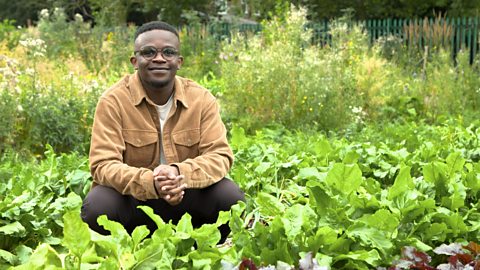
UK settlements and navigating using maps. video
Exploring the different types of settlement in the UK - including villages, towns and cities - and how to navigate using maps, including symbols, compass points and co-ordinates.
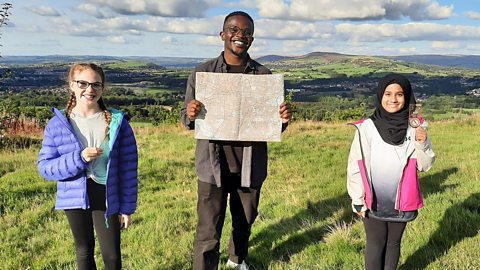
Urban settlements - living in a city or megacity. video
Exploring key aspects of cities and megacities - building use, population density, environmental impact and sustainable choices.

Coasts and sustainable use of natural resources. video
Examining a coastal region of North Wales, including a local wind farm and examples of the sustainable use of natural resources.
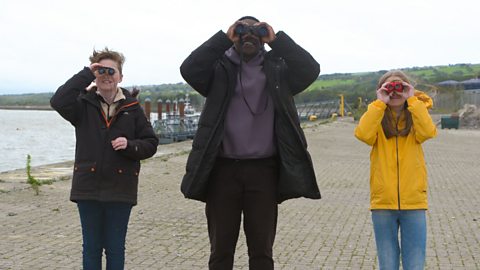
Rivers - the course of a river from source to mouth. video
Exploring the key aspects of rivers - the source, tributaries, streams, meanders, ox-bow lakes, river mouth and estuary.
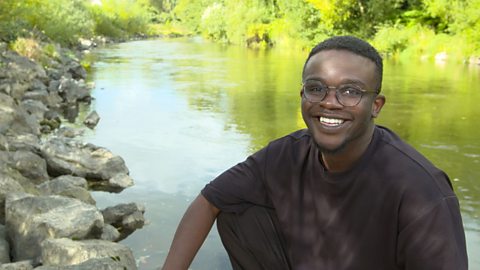
Mountains - how tectonic plates create mountain ranges. video
Exploring how tectonic plate movement creates mountains where the plates collide and single peaks formed by volcanoes.
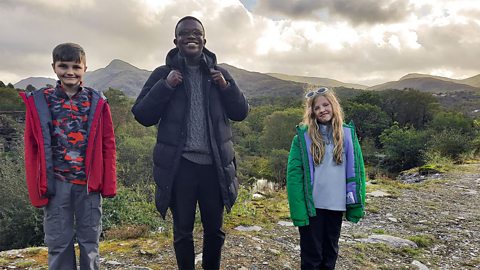
Lakes, lochs, reservoirs and the water cycle. video
Visiting Lake Windermere to consider lakes, lochs and reservoirs and their place in the water cycle.
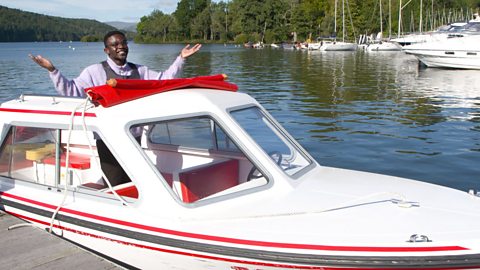
Forests - deciduous and coniferous woodland and biodivsity. video
Exploring a forest region in the Lake District to discover the rich biodiversity of woodland habitats.
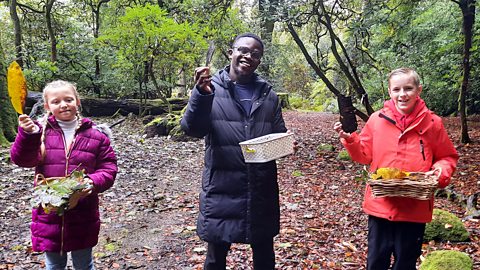
Peatlands, wetlands and the carbon cycle. video
Exploring the significance of peatland and wetland habitats to store water and absorb carbon or CO2.
